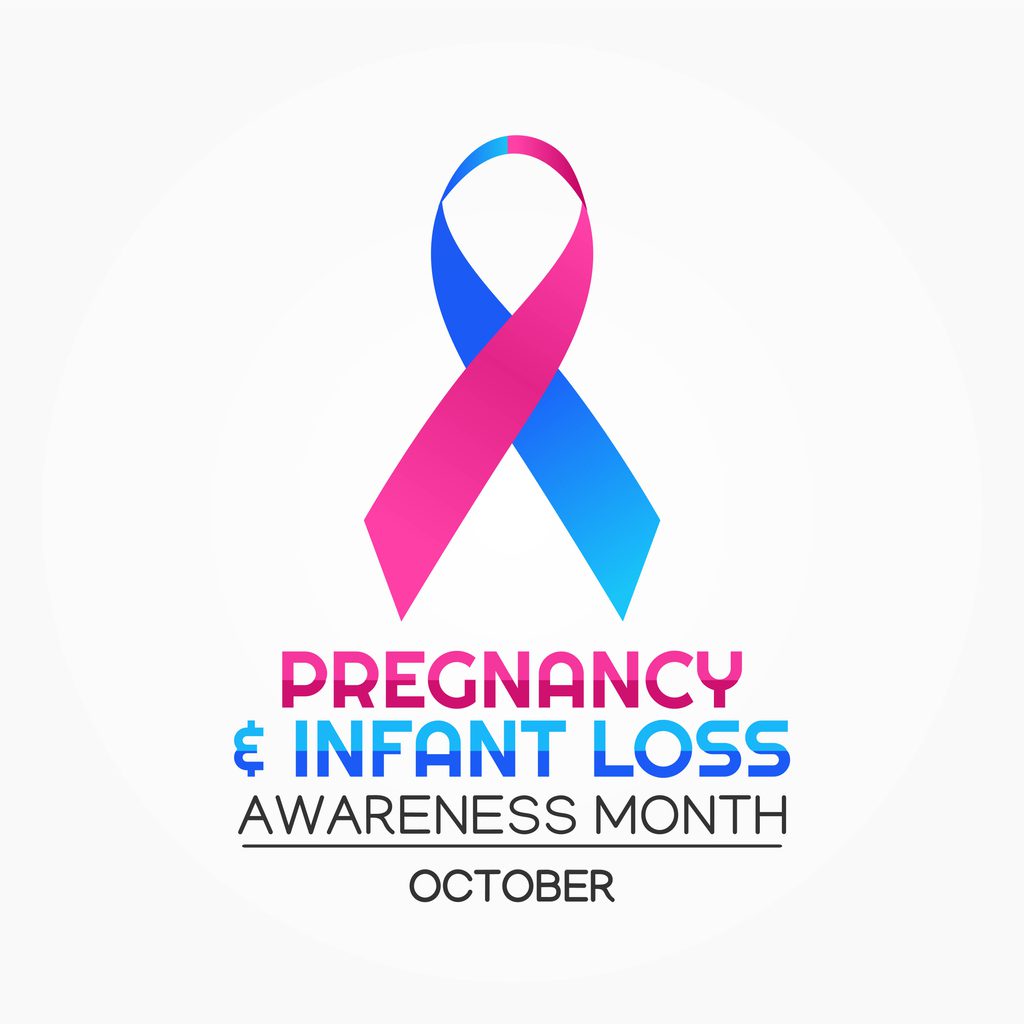Search by Color or Cause


Pregnancy and Infant Loss Awareness Month is observed in October. It is a month of remembrance for pregnancy loss and infant death. Loss also includes, but is not limited to, miscarriage, stillbirth, SIDS, and the death of a newborn.
In addition, Pregnancy and Infant Loss Remembrance Day is observed on October 15. Observances take place in the United States, Canada, United Kingdom, Western Australia, New South Wales and Italy. The day is observed with remembrance ceremonies. There are also candle-lighting vigils. Pregnancy and Infant Loss Remembrance Day concludes with the Lights of Love. Lights of Love is a worldwide lighting of candles that encompasses and spans the globe at 7:00 p.m. (local time). To honor those lost, light a candle. In addition, wear a pink and blue awareness pin for Pregnancy and Infant Loss Awareness Month. Our pink and blue awareness ribbon pins can be personalized with a name, date, or message.
In the United States, 1 out of every 4 pregnancies ends in miscarriage. In addition, 1 in every 160 pregnancies end in stillbirth. These numbers do not include infant death from preterm labor, diagnosis of life-limiting conditions, or SIDS.
Miscarriage is the most prevalent cause of pregnancy loss. Pregnancy loss is defined differently in different countries. Still, a baby who dies before 28 weeks of pregnancy is generally called a miscarriage. Babies who die at or beyond 28 weeks, however, are called stillbirths.
Stillbirth affects about 1 in 175 births. Each year about 21,000 babies are stillborn in the United States. Many of these deaths are avoidable. However, even in developed countries, miscarriages and stillbirths are not systematically recorded, suggesting that the numbers could be substantially higher.
Miscarriages can occur for various causes, including fetal abnormalities, the mother’s age, and infections. Many of these miscarriages are preventable, such as those due to syphilis and malaria. Pinpointing the particular cause, however, is sometimes difficult.
It is estimated that as many as 26% of all pregnancies end in infant loss. And, in addition, up to 10% of clinically recognized pregnancies. Furthermore, 80% of early pregnancy loss occurs in the first trimester. After 12 weeks of pregnancy, the risk of miscarriage reduces. Many stillbirths have unclear reasons. Stillbirth occurs in families of all ethnicities, races, and socioeconomic backgrounds. It also occurs in women of all ages.
Maternal age is a significant determinant of miscarriage risk. The probability of miscarriage before 20 weeks gestation in women aged 20 to 30 is 8.9%. This increases to 74.7% for women over the age of 40. Prior obstetrical history is another key predictor of early pregnancy loss. The probability of miscarriage in a future pregnancy is around 20% after one miscarriage, 28% after two consecutive miscarriages, and 43% after three or more consecutive miscarriages.
Women have varying levels of access to healthcare services.Hospitals and clinics worldwide in many countries are frequently under-resourced and understaffed. As diverse as the experience of losing a baby may be, stigma and guilt emerge as similar themes worldwide. Mothers who lose their pregnancies often remain silent about their loss, either because miscarriage and stillbirth are still so common or because they are thought to be unavoidable. World Pregnancy and Infant Loss Remembrance Day creates public awareness of pregnancy loss, and the importance of acknowledging their lives and the impact it has on families.
According to the Centers for Disease Control, non-Hispanic Black women and American Indian/Alaska Native women are twice as likely to experience stillbirth in comparison to Non-Hispanic Whites, Asian or Pacific Islanders, and Hispanics. A lower quality of maternal health care, socioeconomic factors, and structural racism in healthcare closely tie to racial disparities in maternal and infant deaths.
Recently, the National Institute of Child Health and Human Development, The NIH Office of the Director, and the NIH Office of Research on Women’s Health launched an initiative called the Implementing Maternal Health and Pregnancy Outcomes Vision for Everyone (IMPROVE). This is designed to improve and reduce disparities, particularly among Black and American Indian/Alaska Native women.